16th Hole, 562 yard par 5:
The last two holes at Clovernook both give opportunities to make birdie. Before you can get there, though, you must survive the arduous trek up the 16th hole. It’s 562 yards, it’s uphill most of the way, and numerous disastrous places to miss lurk on all sides. It’s simply one of the toughest par 5s I’ve played anywhere.
The tee shot plays from a bit of a chute. Short hitters actually have a fairly wide fairway to aim at, but they’ll be a LONG way from the hole once they get there. For longer hitters, the fairway is very tough to hit as it moves hard left-to-right in the landing area. A big ball risks running through the fairway and under some trees. A push risks getting knocked down by the trees right or not making it to the corner, leaving very little chance of a third shot from inside 175 yards. Additionally, most drives land into an upslope that robs them of much of their distance.
It’s a long way just to reach the fairway from the members’ tee:
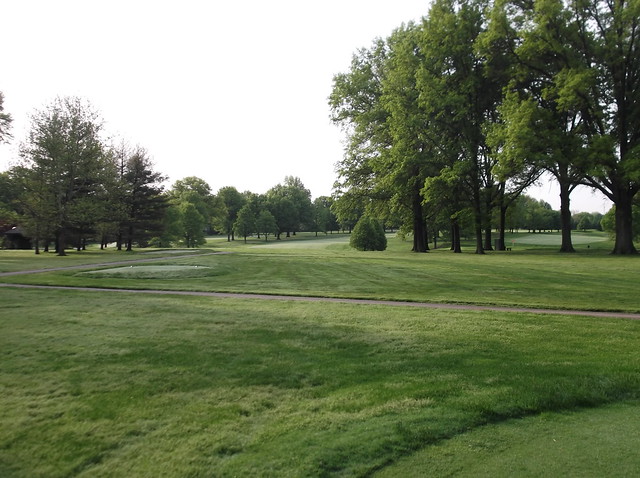
The view from further up shows the hole’s uphill and left-to-right orientation:
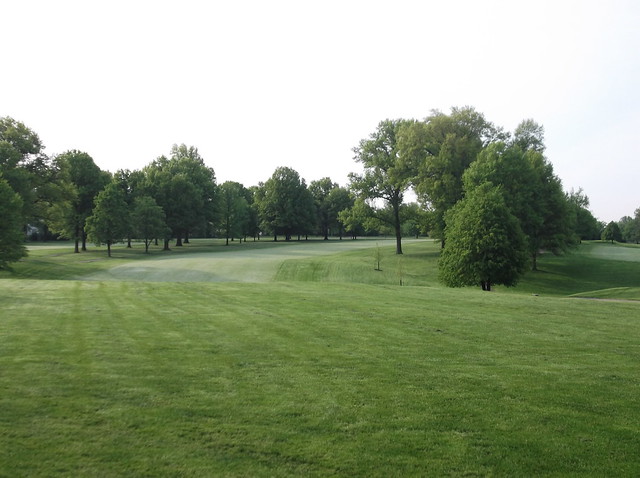
From the fairway, it’s still a long way home as only the biggest of hitters can reach this green in two, and they likely need either very favorable conditions or a natural left-to-right ballflight. For almost everyone, the second shot is a layup as far up the hill as possible.
While the third shot is relatively straightforward, plenty of trouble still lurks. Bunkers on the right side of the green are, once again, severely below the putting surface and make for a very difficult recovery. The bunkers left aren’t much better. It’s a wide opening to the green, but you’ll need to hit it. The putting surface itself is knobby and it’s very difficult to keep putts on line.
After reaching the top of the hill, it’s a fairly flat approach:
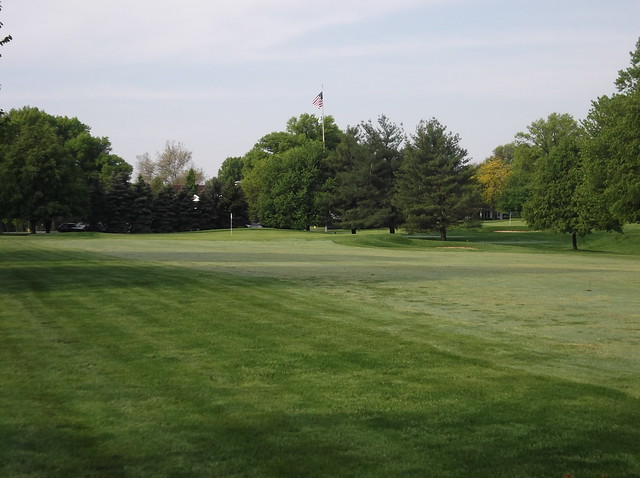
Another green with plenty of contour:
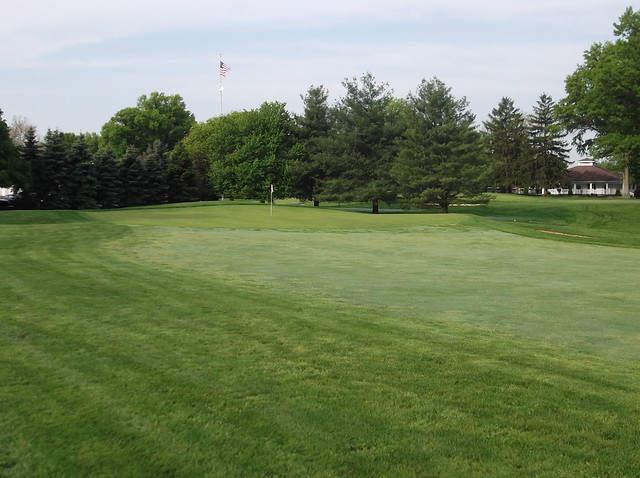
From right of the green, you can see another deep Langford and Moreau bunker guarding the putting surface:
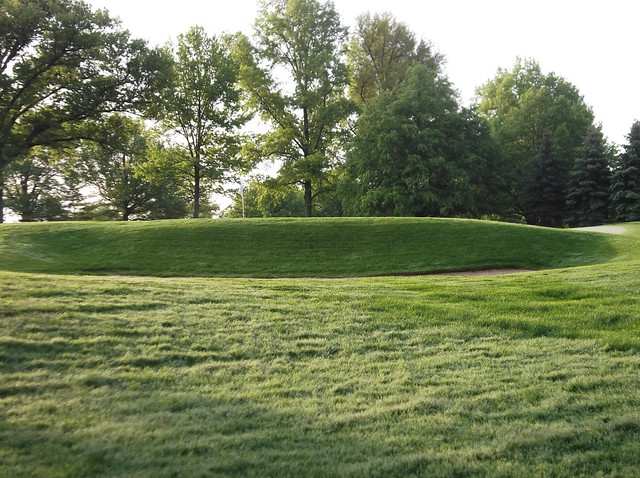
A look at the green from the second fairway:
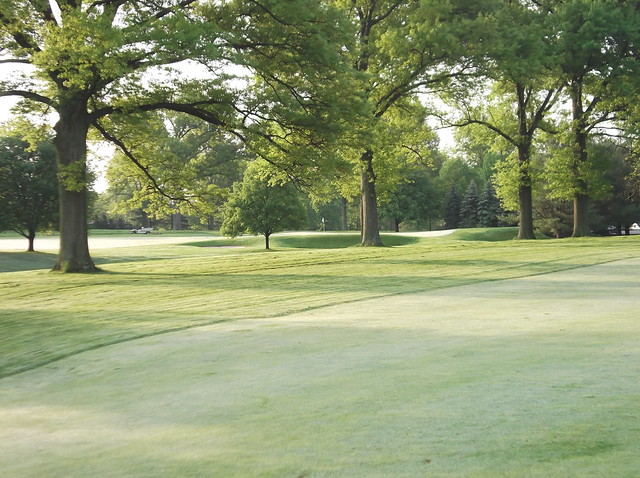
17th Hole, 500 yard par 5:
Clovernook features a wonderful risk/reward finish that gives the opportunity to recover some strokes lost in the tough stretch from 13-16. Equal opportunity exists to see a round wrecked by hazards, including the only water hazard on the course that’s truly in play for anyone hitting the ball reasonably solidly.
The 17th tee shot is a fun one, as it plays slightly downhill on a reachable par 5. Big hitters need to be careful, as water lurks on the left at about the 230 mark. The ideal ball here will get down near the end of the fairway, leaving about 200 yards into the green.
From the tee, it’s a bit of a blind landing area in a fairway that can really send the ball bounding a long way:
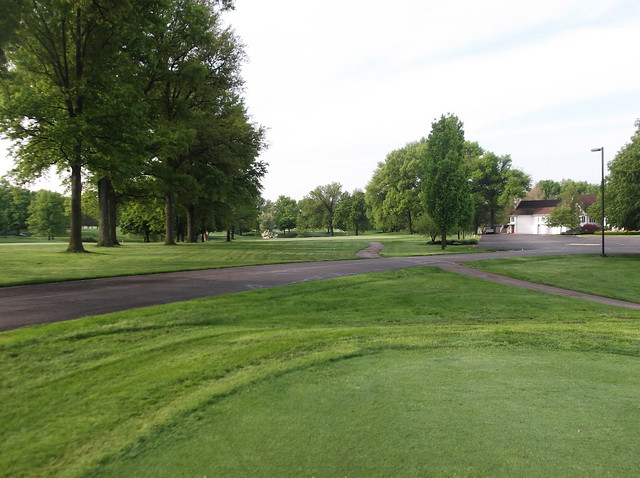
The second shot is a brilliant one. The lone pond on the course functions as something of a Hell’s Half Acre hazard. Players who miss their tee shot may need to lay up short, thus leaving a very long approach. Other players have a green light to go after the green in two. A player who pushed or pulled his tee shot may be dealing with a dicey lie and have to deal with the big tree left, which makes the decision of whether to lay up short or long of the pond a difficult one. Additionally, a player who goes at the green in two but blocks his second right of the tree may wind up in a fearsome trio of bunkers front right.
From the landing zone around 260 yards out. The water gives the short hitter a decision – lay up short or go for the other side? For the bigger hitter, the tree left makes a rip at the green a bit more difficult:
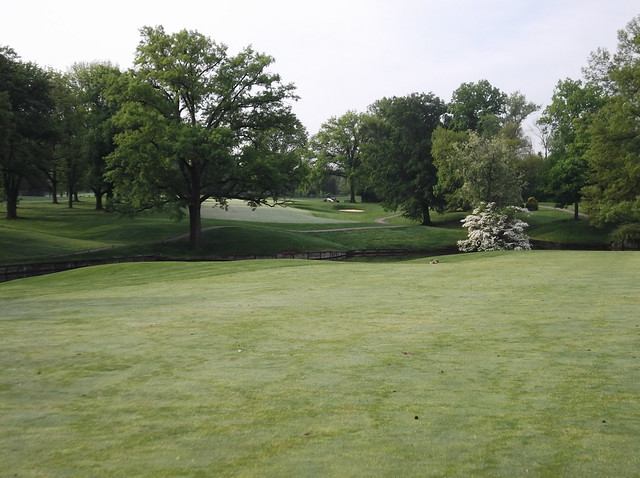
Another look at the pond and target for the second shot:

The green itself is relatively flat and offers one of the two or three best birdie opportunities on the course. This hole really shouldn’t be too difficult, but the risk of blowing up is high with a lot of difficult hazards lurking.
Thanks to the tree left guarding the second shot, this trio of bunkers fronting the right side of the green sees plenty of play:
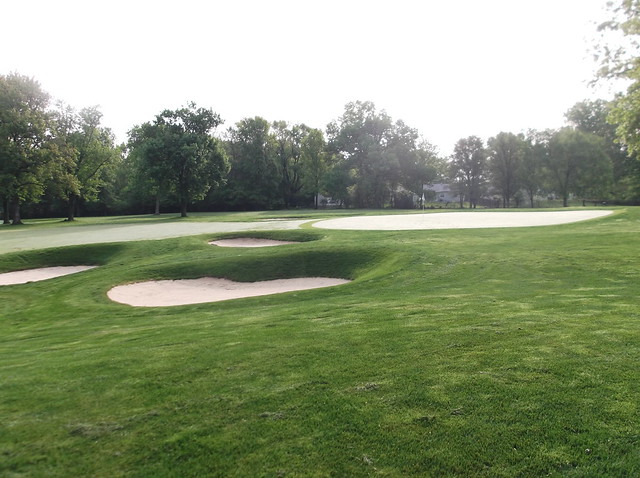
18th Hole, 278 yard par 4:
Like Lawsonia, Spring Valley, and many other Langford courses, Clovernook closes with a good chance for birdie. The 18th is a very driveable par 4, but narrow and with enough hazards to burn the overzealous player as well. A control play might be smart off this tee, but most longer hitters will take a swing at the green. The bunkers on the left shouldn’t really be in play, but often see action thanks to pulled tee shots getting knocked down by the trees left.
The tee shot is a bit tight, but there’s a very alluring promise lurking at the end of the fairway as the green is only about 250 yards away:
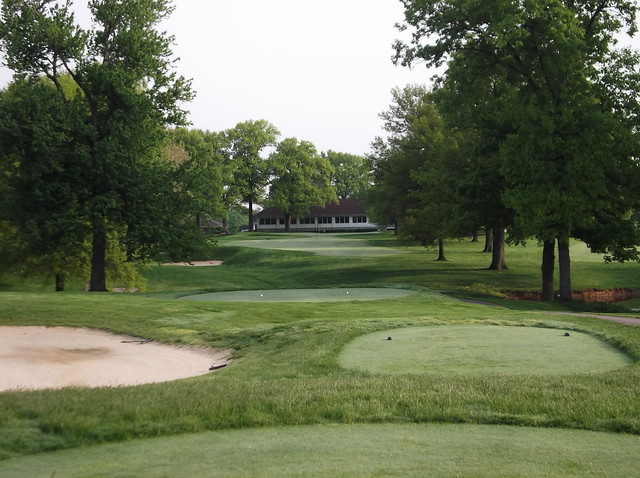
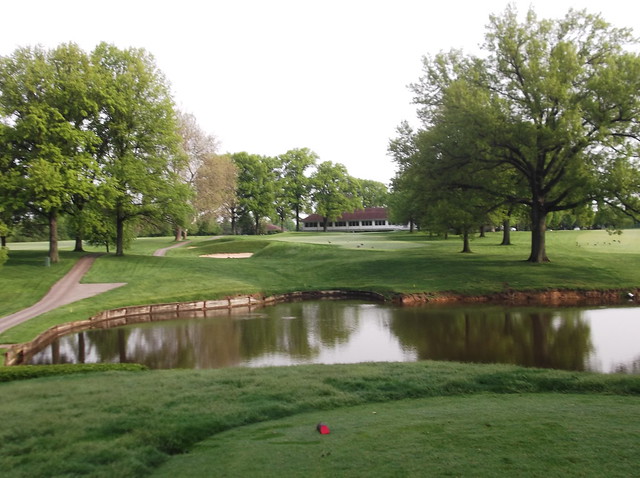
These bunkers some 150 yards from the tee see a surprising amount of action thanks to balls that encounter tree trouble:
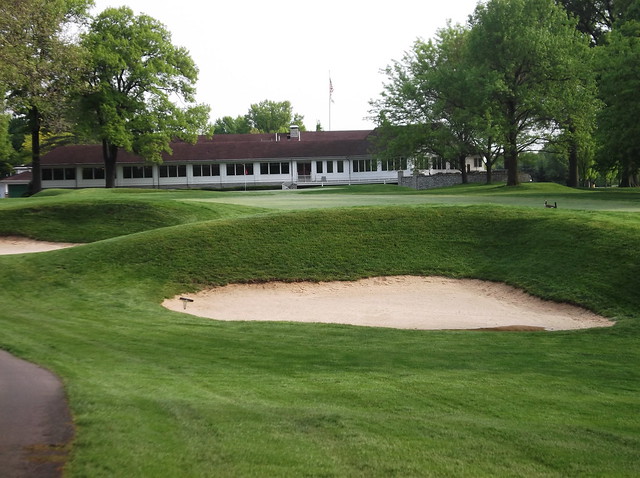
The approach is to a fairly flat green that extracts a big penalty for players who miss the target. More deep Langford and Moreau bunkers surround it on the left and back sides, making it very difficult to get up and down for par (or birdie).
Overall, Clovernook is a really fun golf course that provides a nice look at a Langford and Moreau routing with many of its features still intact. While the course would benefit from some tree clearing and bunker restoration/renovation, it’s really a sporty course kept in excellent condition that offers a playable, difficult, and varied challenge. It’s also a club with a wonderful, casual atmosphere. It flies under the radar a bit among Cincinnati’s best courses, but I think it’s absolutely worth a look for architecture fans and as interesting a course as any in its area aside from Camargo. While the routing gets a bit constrained in spots between the smallish property and heavily treed corridors, it’s a course with plenty of teeth to test any player and with a lot of excellent holes. In particular, Clovernook deserves credit for being as good a set of greens as any in the impressive Langford and Moreau catalog and for being as interesting from 100 yards and in as any course. It’s truly an interesting place to play on a daily basis and a great history lesson for anyone interested in golf course design.